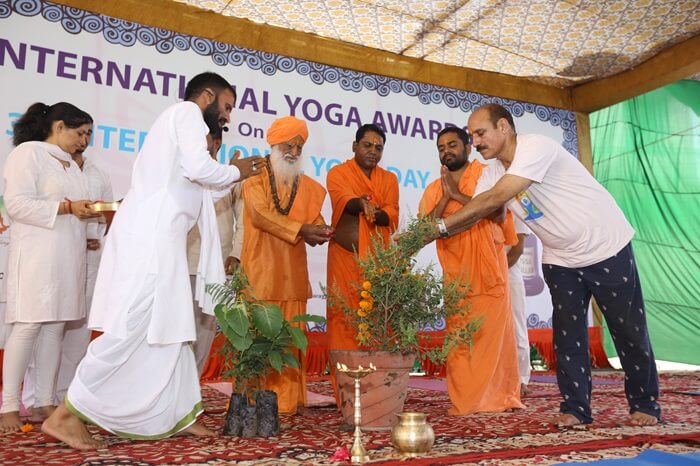The Power of Mantras in Yoga Practice
Hearing the ‘Om’ sound as soon as you step into a yoga class can be astonishing if you’re new to yoga. For seasoned practitioners, it signifies the beginning of a transformative journey. ‘Om’ is a sacred mantra chanted at the start of a yoga session to facilitate a connection between the self and the universe.

Meaning of Mantras
A mantra is a collection of words, each carrying its own power and significance. Together, these words help center the mind and create space in the body, mind, and spirit. The chanting of mantras has been a fundamental part of yoga and meditation in India. Repeating a mantra influences your physiological and psychological being, attuning the vibrations of the mind with the cosmos.
Mantras to Start With
- Om: Known as the mantra of the universe, Om encompasses the vibrations of the entire cosmos, uniting us with everything and everyone. It is chanted by those seeking enlightenment and practitioners focusing on yoga asanas.
- Soham: Meaning “to all of creation, the breathing in us all,” Soham involves focusing on ‘So’ during inhalation and ‘Hum’ during exhalation. This mantra helps you connect with the infinite.
- Om Namo Narayana: This mantra invokes the power of Vishnu, bestowing infinite love, prosperity, glory, wisdom, and liberation.
Forms of Chanting
According to Patanjali’s Yoga Sutras, there are three forms of chanting:
- Kirtan: Loud and collective chanting of sacred sounds.
- Japa: Quiet and slow mental repetition of mantras.
- Chanting: Melodious and audible recitation of mantras.
How to Use Mantras in Meditation
Meditation can be challenging, and focusing can be even harder. This is where mantras come into play. As your mind wanders, use the mantra to refocus. A mantra acts as an affirmation, helping you stay centered. By choosing a mantra that resonates with you, you can approach your day with confidence.
How to Use Mantras in Yoga Practice
Reciting mantras during yoga practice helps maintain focus, similar to their role in meditation. Mantras act as intentions, guiding your practice and reminding you of your goals. Choose mantras related to your physical abilities and recite them during poses to reinforce your intentions.
Start and end your yoga sessions with a mantra to deepen your practice. Integrate the mantra into your daily life to extend the benefits beyond the mat. Mantras imbue your practice with meaning that transcends physical exercises.
Importance of Mantras in Yoga Practice
- Energy Channels: Chanting mantras during yoga postures helps open energy channels in the body and connect with the divine.
- Focus: Mantra chanting enhances mental focus and creates positive vibrations during yoga practice.
- Emotional Release: Thoughtful mantras echo our deepest truths, aiding in the release of stored emotions and uncovering hidden layers of the self.
- Molecular Structure: The vibrations of mantras affect your molecular structure, influencing your thoughts, feelings, actions, and consciousness.
- Concentration: Mantras improve concentration, strengthening physical postures and enhancing overall awareness.
By reciting mantras, you can leave your yoga mat with a sense of gratitude, reflection, and positive energy.

Conclusion
Mantras are a powerful tool in both yoga and meditation, serving to enhance focus, deepen practice, and connect with the self and the universe. By incorporating these sacred sounds into your routine, you unlock a deeper level of awareness and intention, enriching your yoga experience. Whether you are just beginning or are a seasoned practitioner, the transformative power of mantras can guide you towards greater mindfulness and fulfillment.
To explore these practices further, consider our 200 Hour Yoga Teacher Training in India, 300 Hour Yoga Teacher Training in India, and 500 Hour Yoga Teacher Training in Kerala. Also, discover the benefits of our Ayurveda Retreat in Kerala and Yoga Retreat in Kerala.
















